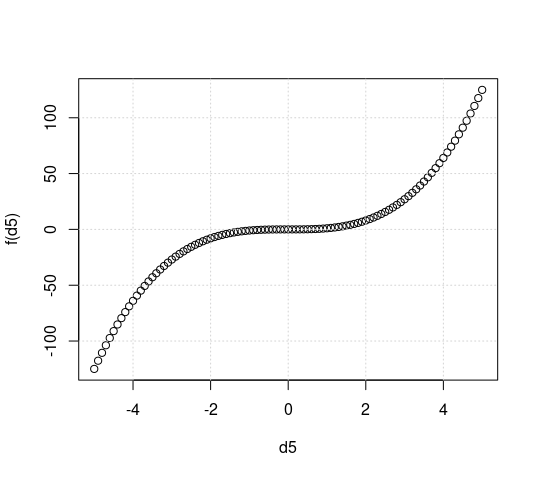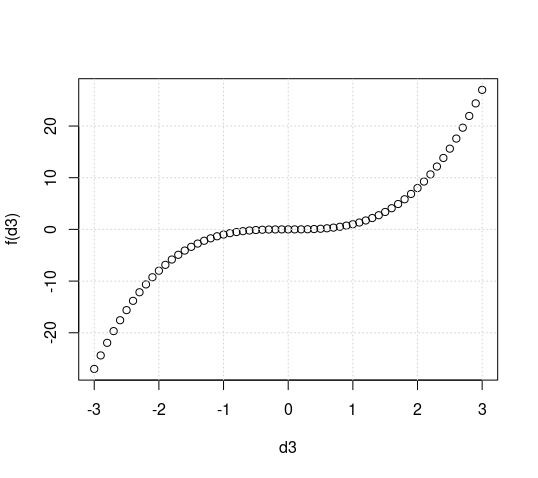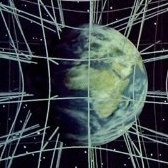Leaderboard
Popular Content
Showing content with the highest reputation on 09/27/20 in all areas
-
A lot of the topics in computer science is about getting help with programming or specific languages and implementations. Should we have a section for "programming help" or similar? Fictive examples to illustrate: Computer science existing section: Focus on the science and research aspects - Here is an interesting paper on the mathematics behind a new set of algorithms. - According to this paper cloud computing requires a paradigm shift for XYZ, what are your experiences of this? - Why does machine learning algorithm X outperform algorithm Y under these circumstances? - I have question regarding complexity theory and computability: ... Computer help section: general help with equipment and software, not so much about programming or systems design. - Have you used "specific Research/engineering software"? Do you have an opinion on suitable hardware? - I have an issue with installing this version of Linux Programming and software engineering help: (just and example name) - Why does this program fail? - In this language, any opinions on library X vs library Y? - How would I implement X in programming language y? - Why is it a good practice in to... In my opinion the general quality of content in the computer section not as high as in for instance physics. The above suggestion is an attempt at addressing that; maybe more science-related content will be contributed if discussions are not too diluted by basic programming issues?3 points
-
2 points
-
Isn't that just tricky word play to get around the rule of "no guesses"? 🤪2 points
-
or ,are there any specific research that might support this idea?1 point
-
I suggest some research, even Wiki, of the Greece-Turkey tensions and conflicts, especially the Cyprus situation. It has briefly turned 'hot' a few times, but it is exactly because both are members of NATO ( Turkey is NOT EU ) that pressure could be brought to bear and hostilities stopped ( but tensions remain ). Similarly if Canada were attacked, the UK is duty bound ( NATO treaty ) to come to our aid, along with the US, France, Germany, Italy, Spain, and the rest of the 30 odd member states, including Poland, Hungry, Greece, Turkey and all of the former Yugoslav states. And no, Hungary was not part of NATO in 56, but of the Warsaw Pact. Australia and New Zealand, on the other hand, belong to SEATO, to which the US and UK were also signatories, but it hasn't been as successful' as NATO; it doesn't have its own headquarters/command and member states like French Indochina and Pakistan have dissolved or left. I would stress that NATO ( and to a much lesser extent SEATO ) is the military alliance since shortly after WW2, while the EU grew out of economic ( strictly ) European alliances that were formed during the 50s, and which C DeGaulle tried desperately to keep the UK out of ( until the 70s IIR ). It is NATO that has contributed to the peace; an attack on any member state is an attack on all of them. You don't think it was the EU that stopped Russian expansion of the Warsaw Pact ( more accurately Warsaw Occupied Possessions ) westward, do you ? The UK, as an independent state, will continue its downward spiral to irrelevance ( along with the other former European Great Powers ) in the face of competition from other resource rich states, like Russia, China, India, Brazil, and the North America block. A United Europe, though, has clout, power, and can't be pushed around by anyone. The UK could have remained a part of SOMETHING, instead you guys voted to become irrelevant, and go begging to others for trade deals. I can't wait until Prometheus has an opportunity to vote on re-joining the EU; hopefully the rest of you come to your senses in sooner than 20 years.1 point
-
This kind of artifact - as seems likely - is known as a lens flare.1 point
-
That would actually backfire. People would blame the Dems for impeaching a man mere days before the people decide in an election1 point
-
Thanks for the reply. We will come to that once enough data is gathered. Speculations at this early stage in the investigation, for instance about saturation of the digital camera sensor, resulting in red image artefacts, would be just guessing. 1: Put a cover over both the lights and drive past the camera. Then put a cover over only one of the lights. Review the location of red number-looking artefact in resulting pictures. 2: If possible, tilt the camera and drive past it with headlights uncovered. Check how the red artefacts change. Especially note how the horisontal lines through the red "numbers" change.1 point
-
I kind of did what in hindsight I feel should have been provided by you in your starting post: Created the plots you spoke about and posted them here. The code is f = function(x) x*x*x d3 = seq(-3, 3, 0.1) d5 = seq(-5, 5, 0.1) dx = seq(-3, 5, 0.1) plot(d3, f(d3)) grid() plot(d5, f(d5)) grid() plot(dx, f(dx)) grid() The created plots are attached. I see no problem with them. I am not aware of any technical problems that R has. While not the question: I do not recommend to get used to R just because it has the reputation of being the most common software used in statistical data analysis. The statement may actually be true. And R is not bad, either. But I feel that Python can already compete with R in terms of (advanced) functionality, and will be the future. And for just plotting functions, there should be much easier solutions / more comfortable solutions (I had used gnuplot with lots of success for a long time).1 point
-
1 point
-
Here are some examples from my experience. If it's maximum money you want. I have a friend who started his business from my front room and became a millionaire. He said to me "If I work as an engineer (as part of a team) I can only make the wages of one engineer." "But if I supply engineers to many clients at a %, I am not limited by the wages of an engineer, just the number of engineers I can supply" On the other had in the late 1960s, an aircraft design company (Rotax) want to test the idea of teamwork with either a mix of specialists or groups of specialists of the same discipline. So they gave these groups the task of designing and producing a safe control for two wing pumps, A and B. The point was that the aircraft power supply was inadequate to start both pumps at the same time, although it could run both together once started. Most machinery is like this it takes more power to start them than to run them. The mechanical engineering group came up with a complicatd mechanical interlock between switch A and switch B. The electronic engineering group came up with a fancy digital circuit board electronic version. Both were tested by simultaneously jabbing both switches by hand. Both failed. The lone genius came up with a simple single two position switch labelled switch on A , switch on B. In the offshore oil industry it takes teamwork to move a laybarge or an oil rig. One is moved by a team of tender tugs shifting anchors and onboard winches, The other by towing with a team of tender tugs. However it takes a talented individual to set one of these tugs alongside an oilrig, laybarge or service jetty.1 point
-
The correct word is "different". In the US, it's the custom for people shopping for clothes to take them from the rack into a dressing room to try them on. We don't have to ask first because in the US, "the customer is always right". In France, it's considered polite to ask the shop keeper first, because it's their store and they're the expert. Different societies (with different languages) have different conventions for behavior. Some languages can sound harsh to foreign ears. People speaking German often sound angry to me, while people speaking Arabic or Cantonese often sound excited. I think that's just me trying to make someone else's speech patterns fit my American English sensibilities. How we deal with accents is cultural as well. I grew up watching movies where the villains spoke English with German or Russian accents, so folks who speak like that can be intimidating. The posh British accent is almost branded in the US as "intellectual".1 point
-
The spacetime interval is defined as \[ds^2=g_{\mu \nu}dx^{\mu}dx^{\nu}\] This quantity transforms as a rank-0 tensor (a scalar), so it is covariant under changes in reference frames. All observers will agree on it. If this weren’t so, then observers would disagree on l both the geometric length of world lines, as well as on the geometry of spacetime itself - which would be problematic. For example, a photon in one frame (ds=0) would appear as something different in another frame (ds<>0). One of the observers is located at the same place as the light, whereas the other observer is at the bottom of the tower, so he will be spatially removed by some distance (even if they are both at rest) - in the first case, there is only a temporal term in the line element, in the second case there is both a temporal as well as a spatial part. But the sum of the two is “balanced” in just the right way so that they both agree on the spacetime interval. The two observers are related by a simple coordinate transformation - which leaves the metric covariant. Any tensorial quantity will be unaffected by changes in reference frame, regardless of whether you are in a flat or a curved spacetime. The metric is an obvious example, as are the various curvature tensors, as well as the energy-momentum tensor, the electromagnetic field tensor etc etc. The notion of gravitational potential can only be meaningfully defined in spacetimes that admit a time-like Killing vector field, and which are asymptotically flat. Schwarzschild spacetime is one such example. A counter example would be spacetime in and around a binary star system.1 point
-
Have you noticed the red dots by your right hand? They seem to be in a similar position relative that side's headlight ie at about 1 o'clock.1 point
-
It seems to be pretty awesome looking camouflage... https://www.sciencedaily.com/releases/2011/04/110425120344.htm#:~:text=A team of researchers at,hindwings that are folded underneath.1 point
-
Ok. I'll try to avoid that by asking questions then. What happens when you pass the camera with the lights switched off on the Cub Cadet? Same red number "214"? How do the lights on the new and the old Cub Cadet differ?1 point
-
Some general methods that can be used to approach the issue: (A) Get rid of the large example Focus on something simple and generic that also behaves in the same unwanted way. Figure out why the simple example fails Apply fix to main example or (B) Run the example in a debugger Examine the output for the line(s) that produces the result you consider incorrect Update the code and retry or (C) Study the functions or APIs that you want to use Use the function according to the documentation or (D) Start from the required behaviour (print a matrix) Locate libraries or functions that according to documentation displays the required properties Note that the methods above can be applied in a wide set of programming issues, not just 8*8 arrays. There may also be other methods, like posting on a python or programming forum. (A) A simple example: print(a) print(b) result, print function produces a newline: 1 2 Modify simple example print(1, end=",") print(2) result: 1,2 (B) Debuggers have been covered in other threads opened by you. (C) Documentation of the built in print function The documentation of print available at for instance https://docs.python.org/3/library/functions.html#print will tell you that print by default ends the output with a newline character loch you may not want. (D) Printing a matrix Since numpy is used it may be convenient to use the available methods in numpy: print(np.matrix(Board.Matrix)) Please follow up on which method(s) you used to solve the issue.1 point
-
The funny thing is, he's already accepted that a Doppler effect is acceptable in his definition of reality, and it's an easy modification of a twin paradox setup to make neither twin inertial and make it truly symmetric. Then just say "that's what they both see." It's also funny because for me, seeing the asymmetry in the Doppler analysis of the twin paradox is probably what fully sold me on the predictions of SR, and I never doubted the resolution of the paradox after that, even though I still would have struggled with "the Earth's clock jumps forward with the traveler's change in inertial frame." Then if you cherry pick some predictions of SR, you can get something that fits Michel's reality and doesn't add up (which is not a problem for Michel). For example, if you let the traveling twin have a lightyear-long ruler attached behind it, and you make it so the entire ruler stops simultaneously in Earth's frame, then you can see something like this: Say v=.6c, from Earth the receding ruler appears compressed by the Doppler factor of 1/2. Then when the 1 LY mark on the ruler reaches Earth, that part of the ruler stops, but the traveler appears to keep moving until it reaches 1 LY rest distance. All along the ruler, a "wave" of successive lengths of the ruler being seen coming to stop and returning to normal length spreads down the ruler, the wave moving at an "apparent rate" of c, so that it takes 1 year to see the traveler and the end of the ruler coming to a stop 1 LY away. That's something SR predicts and sounds similar to what Michel has described the traveler seeing (instead of SR's prediction of the traveler seeing Earth's entire ruler appearing normal instantly, when the traveler---not Earth's ruler---stops and comes to rest in Earth's frame). I'm not positive I got the details right. Course, you'd have to sell your soul to argue that the predictions of SR describe reality and show that SR is wrong.1 point
-
It is important for you to first consider that many cultures with primitive religious or cultural development both now and in the past have concluded a similar assumption; in that their world and the objects in the sky are all sentient beings controlling some aspect of their lives. The Mother Earth and a particular celestial Father (Sun, Moon, Jupiter, etc. ) of one type or another, are some of the oldest and most often repeated primitive ideas regarding creation that humans have conceived to explain their surroundings and by simple extrapolations their existence. We have a built in bias towards these Ideas. Just look at the most recent iteration of the sentient Mother Earth, we now have a sciency sounding version called Gaia hypothesis; https://en.wikipedia.org/wiki/Gaia_hypothesis “ Lovelock named the idea after Gaia, the primordial goddess who personified the Earth in Greek mythology” Thanks to evolution, we are prewired to almost a default condition to seek out other “like minded” beings. Even going to the point of wanting and projecting human like attributes onto any natural object or phenomena that we can imagine has self-determinate behaviors. The first step in any investigation is to understand and check our own internal bias, in this case though, it is built into our species to such a degree we will likely always have it as the default setting when humans lack the access to accurate scientific knowledge.1 point
















